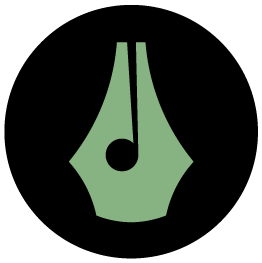Publick Musick and Brian Shaw
- Concert preview, Editorial, RPO
- 17/03/16
Publick Musick, a Baroque period-instrument ensemble welcomes world-renowned trumpet virtuoso Brian Shaw for two concerts this weekend.

Publick Musick and Brian Shaw
If you’re looking to expand your musical palette, look no further than this Saturday. World-renowned trumpeter Brian Shaw will join Rochester-based Baroque and period-instrument ensemble, Publick Musick.
Publick Musick, although it began in 1995, met a renaissance when Rochester Philharmonic Orchestra cellist Christopher Haritatos and his wife, violinist Boel Gidholm. Mary Riccardi on violin, Daneil Elyar on viola, and Naomi Gregory on harpsichord round out the group. The couple, who were married in 1999 after they met overseas in 1992 while studying, bring a knowledge and passion to playing Baroque music, on period instruments, no less.
“Baroque” is a term that was later attributed to the 17th-18th century styles of art. Throughout a litany of languages, “baroque” derives from words meaning “imperfect pearl.” When this period was first named as such by historians, it was called this in a derogatory manner, referring to the style’s use of “excessive,” and “redundant” detail. Prime examples of Baroque style include the Trevi Fountain, and Crowning with Thorns. The Baroque style, which unsurprisingly began in Rome, was endorsed by the Catholic Church in response to The Protestant Reformation, which created the style’s widespread popularity and many religious themes.
Musical styles almost always follow their artistic counterpoints, and Baroque was no different. Though the opera L’orfeo by Monteverdi was first performed in 1607, this is considered very early Baroque. Opera was a style that arose in the Baroque, and capitalized on the in-style ornateness, and whose vocal style (many slurred decorative notes with few “cadences;” musical punctuation) was imitated and expanded upon in later work. The height of the Baroque had Vivaldi, Telemann, Handel, and Bach all active at about the same time.
Baroque music is immediately identifiable, mot notably because it is often associated with the sound of the harpsichord. The keyboard, an ancestor to the modern piano, was the mainstay of the time along with the organ, provided the basis for all Baroque music. The harpsichord works by a plucking system. When a key is pressed, a mechanism lightly plucks the string compared to a hammer with a modern piano. An organ produces sound by pumping huge amounts of air via bellows, and air is redirected when keys are pressed (by hands and feet) through pipes that are set to definite pitches. Because of these sounding mechanisms, it is difficult for these instruments to adjust their dynamic, or volume level. Organs are always loud because they have to fill a church, and harpsichords are always quiet. As such, instruments tended to quieter to play along with the harpsichord, particularly the strings.
“It’s a big adjustment for me going between a modern and period cello,” Haritatos said. He explains that a Baroque cello responds much more sensitively compared to a modern cello. “I have to work much harder to get the sound I want from a modern cello playing Baroque… It just doesn’t feel like right.”
Gidholm expressed less difference, as she mostly plays the Baroque violin, but noting that there are fewer differences between a modern and Baroque violin.
Comparing strings to their modern counterpoints is one thing, but brass horns are another matter. Horns went through much bigger transformation. They began as hunting or fanfare horns, at first only requiring a few notes to the full range that we hear today. In the Baroque era, trumpets began to be features because they were fairly ubiquitous for those purposes. They were, and are, difficult to play.
The “natural trumpet,” which is the Baroque-era trumpet. It’s valveless. Yes, that means that notes cannot be changed by redirecting the air through various sets of tubes. Much more of the technique is placed on the performer.
“Brian is one of the best,” Haritatos said. “He’s one of the few in-demand great Baroque trumpet players… And he’s a jazzer too!”
The playing of Baroque trumpet parts in complicated by one thing compared to the strings… The need to breathe. Because of the coloristic and decorative nature of Baroque, many notes are played together in sequence.
The concert at Hatch Hall, which is part of Eastman’s Trumpet Festival, features two pieces by Telemann, Sonata à Tromba, 2 Violini, Viola, e Cembalo, TWV 44:1 and Concerto à 4, 2 Violini, Viol. e Cembalo, TWV 43:d2, Mensa Sonora, Pars III by Biber, Sonata à 4 Be mollis by Vejvanovsky, and a notoriously difficult Concerto per Clarino, No. 1 by Molter.

Leave a comment